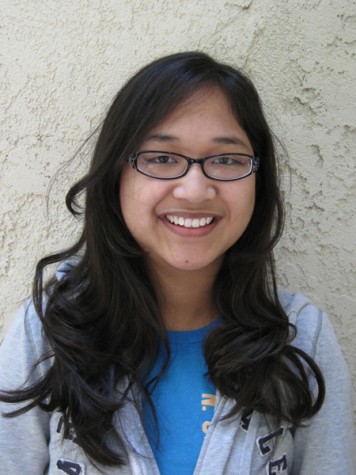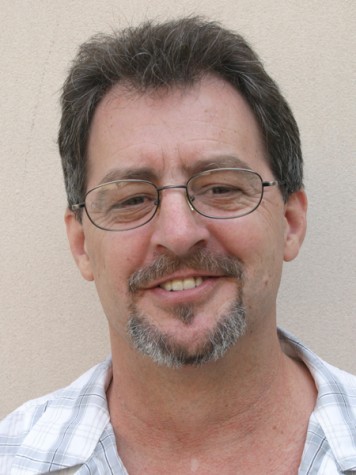Dressed in a white T-shirt and khaki shorts, 8-year-old Jonathan Larson returns home from a morning hike with some of his friends.
It’s a Saturday morning in a peaceful neighborhood in northern Glendale near La Crescenta. The cool temperature clashing with the gentle warmth of the sun makes it the perfect weather to be outdoors, and Jonathan is up and about.
As the front door closes behind him, Larson makes his way to the couch and takes a seat. A few minutes after that he walks down the hall and takes a left into his bedroom.
Inside his room there is a tall, light blue bookshelf. There at the top are 10 trophies arranged in a slightly crooked row. The awards attest to his level of performance in soccer, karate and basketball.
On the floor next to his bed is a mini DVD player. A friend slept over at his house and they watched a movie the night before.
But it isn’t any of these objects that is most catching to the eye.
At an angle across his bed sits a chest filled with Legos. Near the chest lay a few complex Lego creations, all originally designed by Larson himself.
He’s eager to talk about his interests, particularly his passion for Legos. He shares that he will be visiting the original Legoland park in Billund, Denmark with his family during the summer, and is excited about the trip.
Visiting Legoland certainly isn’t an ordinary journey that kids of Larson’s age get to embark on, but what’s more out of the ordinary is the journey Larson began when he was just 4 years old.
On Dec. 5, 2005 at 3 p.m., he was confirmed positive for acute lymphoblastic leukemia, cancer of the blood where the count of white blood cells are significantly higher than red blood cells.
“One day in kindergarten, my face turned pale,” he says carefully, giving much thought to how the events played out that day. “And then my teacher called my parents and said my face is pale. So that night my parents took me to the hospital, and then they found out I had cancer.”
In December of last year, Larson was formally selected as a recipient of the Make-a-Wish Foundation and was honored with an award ceremony at the Grove in Los Angeles.
Since its inception in 1980, the foundation has granted the wishes of children between the ages of 2 1/2 to 18 with life-threatening medical conditions.
In the process of deciding what wish to grant him, Tessa Bowser, director of development and communications for the Make-a-Wish Foundation of Greater Los Angeles, said, “when the volunteers went over to his house to interview him to determine what his wish would be, he was just showing them all of his Legos. He was so excited.”
The day of Larson’s diagnosis is one that his mom, Annette, remembers clearly.
“I thought I died,” she says, taking a painful walk down memory lane. “I was nauseated, I was sick to my stomach. It’s really hard to describe. It was the worst feeling in my whole life.”
For the next 3 1/2 years, the then 4-year-old underwent intensive treatment, ingesting multiple pills and undergoing chemotherapy on a daily basis. He also became subject to intravenous chemotherapy once a month, and lumbar puncture, also known as the spinal tap. The procedure involved the insertion of a needle into his spinal canal for the withdrawal of his spinal fluids, and was necessary to ensure that the cancer did not spread to his brain.
In addition to the medications and procedures he had to endure, Larson suffered low blood count, which required him to go through multiple blood transfusions.
The first six months of Larson’s treatment were the most intense. The heavy-duty chemotherapy that bombarded his small body to eradicate the cancer cells caused him to lose hair and significantly compromised his immune system.
“He didn’t have an immune system to speak of,” says Annette. “He had to stay home, he couldn’t see visitors, he had to wear a mask if he went outside. He was literally isolated.”
From the frequent washing of hands to changing their clothes as soon as they got home, Larson’s family had to take extreme precautions in order to shield him from outside germs.
Having no choice but to stay at home for the most intensive months of his treatment, Larson’s interest in Legos grew and developed.
“Legos literally kept him sane, because that’s what he did – he built Legos,” Annette says. “[During] the chemo days, those are the things that kept his brain working, that kept him motivated, that kept him happy.”
Sitting in front of the fireplace, Larson holds two Lego creations, one in each hand, and explains what he has designed. The one in his right hand is a cross between a truck and an airplane, while the one in his left is simply a helicopter with a Legoman sitting in the cockpit.
He is quite the expert when it comes to Legos, and knows about them to such an extent that he is able to distinguish certain pieces that are no longer in production. He is owns at least two rare Lego accessories, one of which is a small, transparent yellow head that can be easily attached to a Legoman body.
Larson’s passion for these toys has influenced his aspiration to someday become an engineer, because “they build stuff,” just like he does with Legos.
Last month, Larson celebrated his 9th birthday. This year also marks his fourth year of living in remission, and in six more years he will be considered cured of his illness.
If he doesn’t have a relapse.
But it’s not a possibility that his family, nor Larson himself, likes to dwell on.
“You can’t think about these things,” says Annette. “As a parent, you can only take it one day at a time.”
“I was scared when I had cancer,” Larson admits, but he isn’t one to sulk in his more difficult days. He seems to prefer to share, on a lighter note, “[The cancer] went away when I was 7.”
At just barely a decade old, Larson’s positive attitude and resilience are qualities that are impossible to miss. He isn’t one to delve into the details of the battle he fought every day for 3 1/2 years.
Still, his battle isn’t over just yet.
“I have to go to the hospital every six or seven weeks to get a blood test,” he says. The tests are necessary to keep his condition monitored. “But I don’t have [cancer] anymore, but [the doctors] are making sure I don’t get it again,” he adds quickly, staying positive about his situation.
In the meantime, Larson continues to live his life like any average 9-year-old. He plays soccer and takes karate lessons; he enjoys exploring, likes reading funny books and has an interest in electronics.
Except unlike most kids his age, he gets to spend a week of his summer touring the Legoland park in Denmark.


